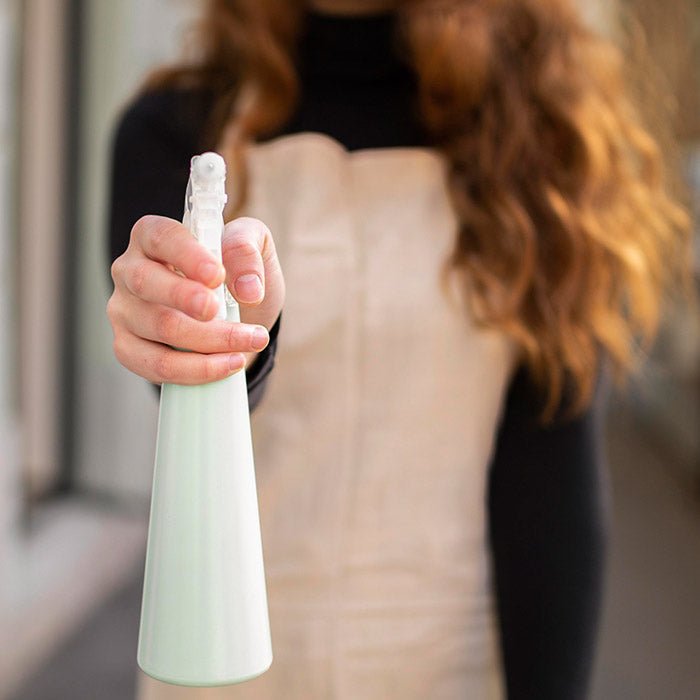
There are many urban legends and stories surrounding beauty salon inspections, portraying inspectors as people who merely nitpick and make up nonsense. However, I have some good news for you right away – fortunately, most of these stories are exaggerated, and such encounters with inspectors usually end well and can even be helpful, as we ensure our salon is simply running smoothly.
But we all know that every time someone checks us up, it can be emotionally draining, even stressful. So, I have a few tips for you on how to prepare for an inspection at your salon . Maybe this will make the inspection painless, and I wish you the same!
I recommend you don't be afraid of the sanitary inspectorate. If you have any questions about your salon, don't be afraid to just call and ask. This way, you'll immediately know what the inspectors in your region require. I also mention this because sometimes, during our meetings and training sessions, girls from different cities offer contradictory interpretations of the regulations – all the more reason to call, write, and ask. During the pandemic, reaching the sanitary inspectorate wasn't easy, but fortunately, now everything is back to normal.
The first thing I want to say and immediately reassure you is that a Sanitary Inspection inspection is almost always announced . You simply receive a letter stating that something like this will take place within 30 days, and it is usually possible to arrange a date so as not to disrupt the operation of your salon (if you're interested, more details are provided in the Act of March 14, 1985 on the State Sanitary Inspection (Journal of Laws of 2019, item 59, as amended). Unannounced inspections do happen, but they are rare. But overall, if you know what to expect, no inspection is scary for you ;)
What can be checked during an inspection at a beauty salon?
#1. Procedures
If you perform manicures, pedicures, ear piercings, permanent makeup, tattoos, or aesthetic medicine procedures, you are violating the integrity of human tissue. It may not sound very poetic, but that's how it's defined in the Act of December 5, 2008, on the Prevention and Control of Infections and Infectious Diseases in Humans. It mentions procedures, or instructions, that must be developed and written down (employees should review and sign them). According to the regulations, these instructions should regulate:
- the procedure to be followed when performing activities that involve disruption of human tissue continuity,
- rules for the use of equipment subjected to sterilization
- methods of disinfecting skin and mucous membranes and decontaminating rooms and equipment.
Auditors may request to see such procedures , so it is best to have them printed out and ready for review.
#2. Separated zones
In the salon , zones for various activities should be separated and described in the design, for example, there may be a cloakroom area, a waiting room, a space with cosmetic cabinets, a space for storing waste, a sanitary and hygiene room (toilet for customers) and for storing cleaning products.
#3. Ventilation
It may be that inspectors will be interested in the ventilation in your living room - I mean the current chimney inspection and the condition of the ventilation and air conditioning (whether they have been treated for mold, whether they are functional and cleaned).
#4. Sterilization
If you use sterile instruments in your work, you can either purchase your own autoclave or have the sterilization performed by a suitable company (often a hospital). In that case, you must have and present a sterilization process record book (a blank book can be purchased online). Furthermore, all disinfectants should have a safety data sheet (SDS), which specifies the ingredients and procedures to follow in the event of poisoning. Employees should review and sign the data.
#5. Waste
In addition to municipal waste disposal, meaning simply regular garbage, it's worth checking whether the procedures you're performing are damaging tissue integrity. In such cases, it's essential to dispose of medical waste . Special companies handle this task and collect such waste periodically—for example, once a month—the waste should be stored at a low temperature in a special container . Sharp parts from needles and instruments also end up in this container, so it's best not to store such waste solely in a bag. Fill the container no more than two-thirds full.
#6. Research
Employees are required to have a sanitary-epidemiological examination —formerly known as a Sanitary and Epidemiological Record Booklet. The examination is performed at a Sanitary and Epidemiological Station, signed by an occupational medicine physician, and costs approximately 200 PLN.
#7 Additional "Covid" Regulations
This may be obvious, but when entering the salon, it's better to have hand sanitizer and disposable masks just in case.
After the inspection, the inspector issues a decision , which you will of course receive. He may also issue so-called post-inspection recommendations, i.e. a list of things that need to be improved - I have never heard of anyone getting a ticket or fine after an inspection, but theoretically such a possibility exists.
On the other hand, I sometimes wonder what beauty salons would be like if no one were inspecting them. Would I want to go to a place that doesn't meet the standards? I think it's worth ensuring compliance with the regulations for your own safety and that of your clients.

